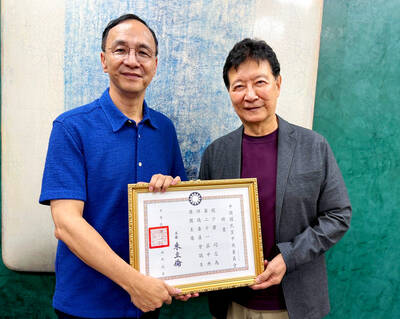VIEW THIS PAGE FOR THE CAR WITH EVERYTHING, A COMPUTER OF ITS OWN
Where haven’t PCs gone? They’re common in dens and living rooms and are even creeping into beds and onto park benches. But until the ClarionMind from Clarion, they have never colonized the automobile.
The Clarion mini PC has an 800-megahertz Intel Atom processor and 512 megabytes of memory. It has a 5-inch touch screen and 4 gigabytes of storage for programs and media. The device can be connected to the Internet via Wi-Fi or by pairing it with a compatible cellphone over Bluetooth. The device uses a special version of Linux and includes software for Global Positioning System mapping, along with a Firefox-based browser for visiting Web sites on the go.
The Mind can play audio and offer driving directions over the car’s speaker system. Video and music can be stored on a microSD card, and quick keys allow instant access to MySpace and YouTube. Clarion has not announced a price but the device should be available next month. Obviously the ClarionMind’s more complex functions are best suited for passenger — not driver — entertainment.
ENABLING A SOUNDTRACK FOR UNDERWATER WORKOUTS
Unlike runners (who put personalized Rocky training-montage soundtracks on their iPods), swimmers tend to exercise in silence. But water enthusiasts who don’t want to sacrifice their headsets have a new option. H20 Audio has created its fourth-generation waterproof headphones, called the Surge, which retail for US$60.
The headsets can withstand up to 6.65m of water and come with five sets of sound-isolation earplugs to help ensure a more customized, watertight fit. The Surge’s speakers have a new in-ear design that increases the bass of their third-generation counterpart. To help minimize dislodging, the cable was lengthened to 112cm, so feel free to perfect that heelside back roll.
AN IPHONE CASE THAT DOES SOLAR-POWERED DOUBLE DUTY AS A CHARGER
The Asian tech importer Brando.com.hk’s latest gadget, a solar-powered iPhone case and charger, taps into two recent and noble obsessions — going green and keeping your iPhone battery full.
The US$48 device is made of black leather and includes a 3.7-volt rechargeable battery and a built-in photocell.
The case can fully charge an iPhone in about 12 hours in direct sunlight (enough power to make a quick call takes less time).
The case comes in two formats — a flip-top model that opens at the bottom and a book-like model with a fastener at the side. The device also includes an AC charger to initially charge the battery. The solar panel can then top off both the auxiliary battery and the iPhone’s battery, when needed. It is compatible with the older iPhone as well as the iPhone 3G.
The case adds about 85g to your phone’s overall weight.
Suddenly, leaving your iPhone out in the sun is not necessarily a bad idea.
DELL’S PORTABLE PROJECTOR FITS IN THE PALM OF YOUR HAND
Backs and shoulders will appreciate Dell’s new portable projector. The computer maker’s new M109S On-the-Go pocket-size projector weighs in at a vertebrae-friendly 0.36kg, and can fit in the palm of your hand.
The M109S features 858 x 600 SVGA resolution, good enough to project a decent image (think more PowerPoint, less David Lean) and a mercury-free LED light source with a four-year life expectancy.
The M109S also comes with a three-in-one multi-input cable that combines the DC power input, VGA and composite connectors, which means fewer peripherals to pack. Vertical adjustment and auto keystone features help restore tilted screens to their rectangular format. The US$500 M109S, out now, is compatible with both US and European television standards, and is HDTV capable. Understandably, chiropractors are up in arms over this.
THIS HEADSET FOLLOWS YOU FROM WORK TO WORKOUT
Your home, neighborhood coffee shop and, on better days, the beach have all served as your mobile office. Unfortunately, not every headset can accommodate such an on-the-go lifestyle.
Sennheiser’s latest Bluetooth headset, the VMX Office, works with landlines, computers and mobile phones, so you only need one device as you move from car to office to home office.
The Office’s Bluetooth compatibility (1.0, 1.1 and 2.0) allows for hands-free calls up to 30.5m away and a single button lets you switch between landline and mobile devices. The VMX’s VoiceMax technology reduces invasive background noise and picks up and enhances human voices, a feature that’s bound to come in handy during those power business walks.
The US$280 VMX Office, out now, also comes equipped with five hours of talk time and more than 100 standby hours. Your 3pm treadmill session/conference call awaits.
AN OVERSIZE MOUSE CAN EXTEND AND TILT FOR A BETTER FIT
Technology should fit your needs, not the other way around. At least that’s the sentiment behind the ergonomically designed Switch Mouse, which can stretch and tilt to fit your hand.
Created by Humanscale, which makes adjustable keyboard and monitor supports, the US$120 Switch Mouse is about 30 percent bigger than a typical mouse. The size is intended to mitigate wrist injuries like carpal tunnel syndrome by incorporating a built-in palm rest and encouraging users to move the mouse with arm motions rather than the more vulnerable wrist muscles.
The device can even be stretched using a ratchet-like internal extender to accommodate larger hands so that fingers fall properly on the mouse buttons.
Also, in an attempt to prevent repetitive stress injury, the underside of the Switch Mouse has a V-shaped bracket that tilts the pointer at a 45-degree angle to keep one’s wrist as straight as possible and minimize pronation. Better still, the bracket can be set for left-or right-handed users.
Just don’t expect it to feel natural the first time you use it. Discouraging bad but ingrained mouse habits can take some time.

Last week the story of the giant illegal crater dug in Kaohsiung’s Meinong District (美濃) emerged into the public consciousness. The site was used for sand and gravel extraction, and then filled with construction waste. Locals referred to it sardonically as the “Meinong Grand Canyon,” according to media reports, because it was 2 hectares in length and 10 meters deep. The land involved included both state-owned and local farm land. Local media said that the site had generated NT$300 million in profits, against fines of a few million and the loss of some excavators. OFFICIAL CORRUPTION? The site had been seized

Next week, candidates will officially register to run for chair of the Chinese Nationalist Party (KMT). By the end of Friday, we will know who has registered for the Oct. 18 election. The number of declared candidates has been fluctuating daily. Some candidates registering may be disqualified, so the final list may be in flux for weeks. The list of likely candidates ranges from deep blue to deeper blue to deepest blue, bordering on red (pro-Chinese Communist Party, CCP). Unless current Chairman Eric Chu (朱立倫) can be convinced to run for re-election, the party looks likely to shift towards more hardline

Sept. 15 to Sept. 21 A Bhutanese princess caught at Taoyuan Airport with 22 rhino horns — worth about NT$31 million today — might have been just another curious front-page story. But the Sept. 17, 1993 incident came at a sensitive moment. Taiwan, dubbed “Die-wan” by the British conservationist group Environmental Investigation Agency (EIA), was under international fire for being a major hub for rhino horn. Just 10 days earlier, US secretary of the interior Bruce Babbitt had recommended sanctions against Taiwan for its “failure to end its participation in rhinoceros horn trade.” Even though Taiwan had restricted imports since 1985 and enacted

Enter the Dragon 13 will bring Taiwan’s first taste of Dirty Boxing Sunday at Taipei Gymnasium, one highlight of a mixed-rules card blending new formats with traditional MMA. The undercard starts at 10:30am, with the main card beginning at 4pm. Tickets are NT$1,200. Dirty Boxing is a US-born ruleset popularized by fighters Mike Perry and Jon Jones as an alternative to boxing. The format has gained traction overseas, with its inaugural championship streamed free to millions on YouTube, Facebook and Instagram. Taiwan’s version allows punches and elbows with clinch striking, but bans kicks, knees and takedowns. The rules are stricter than the